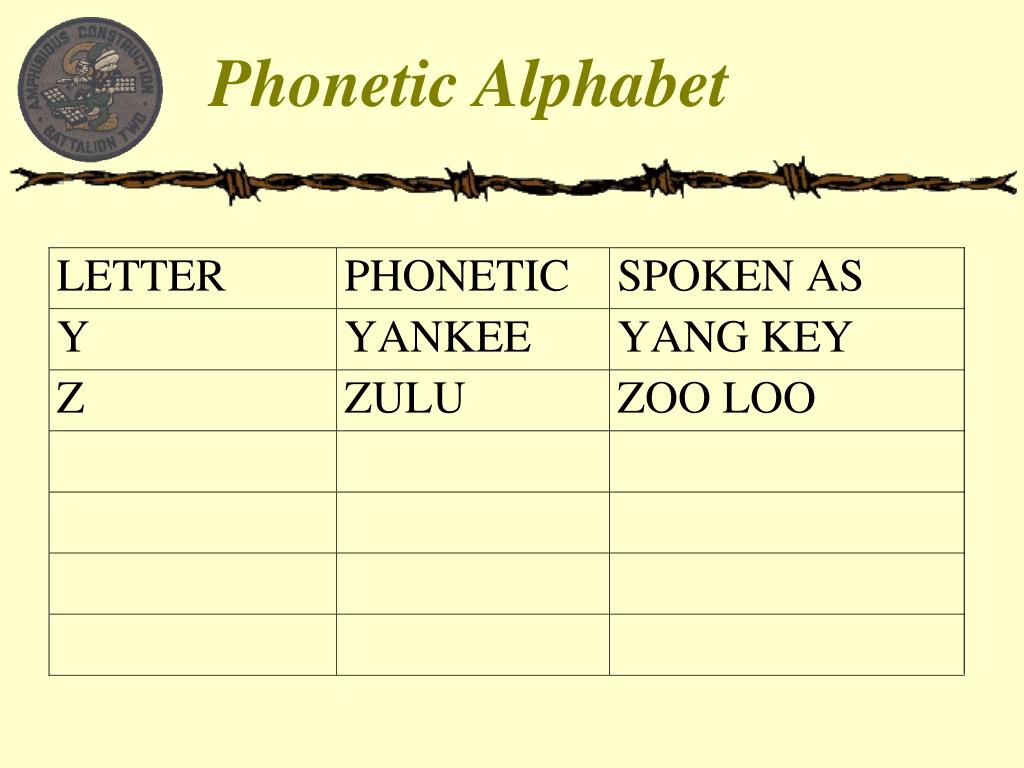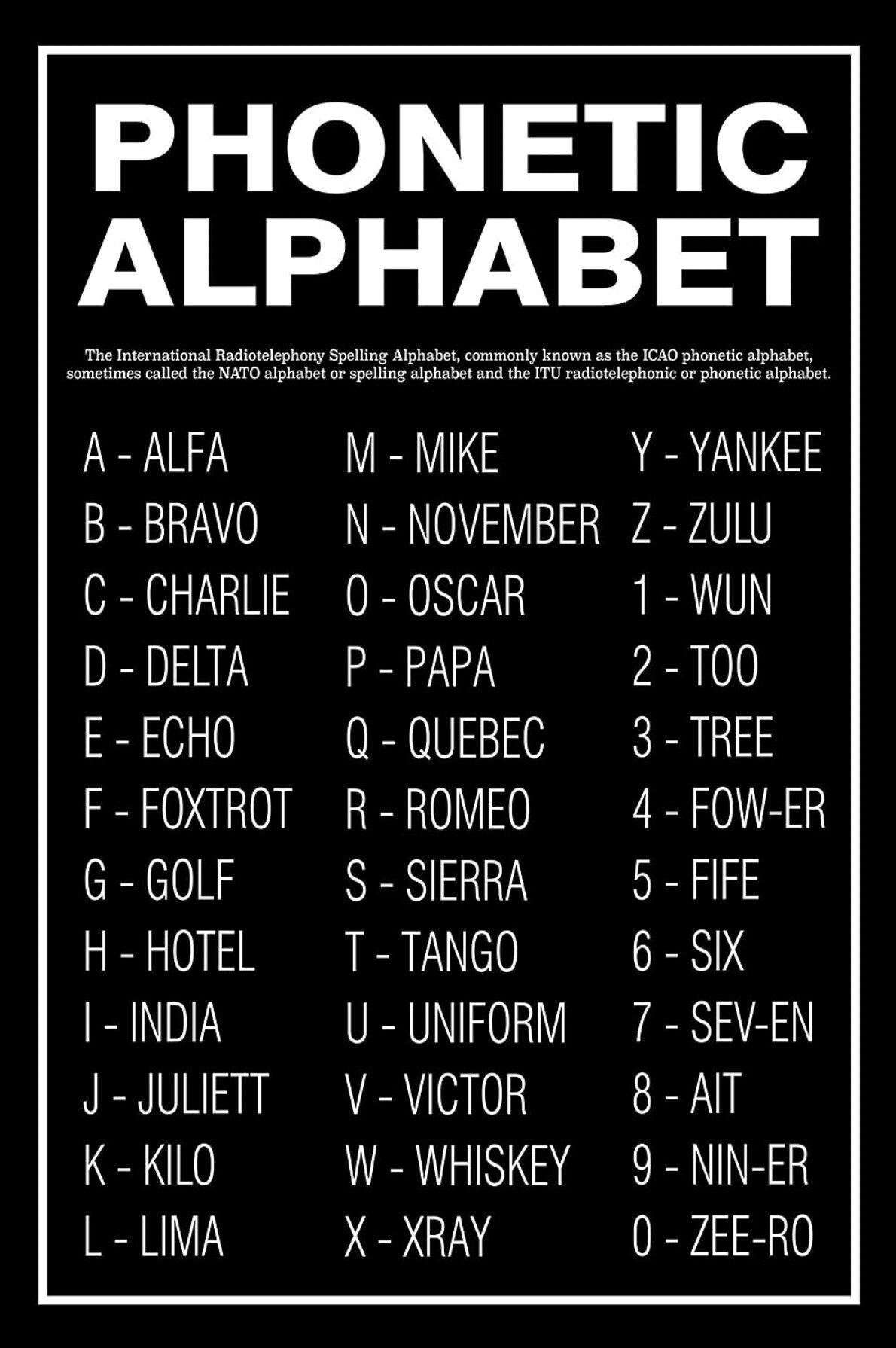

However, most police departments nationwide have kept using the 1940 APCO spelling alphabet, with those using the 1974 APCO spelling alphabet being the exception, rather than the rule. In 1974, APCO adopted the ICAO International Radiotelephony Spelling Alphabet, replacing the Adam-Boy-Charlie alphabet APCO first published in 1940. Replacement with international spelling alphabet The resulting final list differs from the Bell Telephone word list by only five words, and from the Western Union word list by only eight words. Lists used by military services were excluded because of a lack of permission to reproduce.
#The radiotelephony spelling alphabet plus#
The questionnaire solicited suggestions, but also included the existing Western Union and Bell Telephone word lists, plus another list then in general use by a number of police stations. The list was based on the results of questionnaires sent out by the Procedures Committee to all zone and interzone police radio stations. By this point, APCO President Herb Wareing "came out in favor of a standard list of words for alphabet letters, preferably suitable for both radiophone and radiotelegraph use." The APCO first suggested that its Procedure and Signals Committee work out a system for a "standard set of words representing the alphabet should be used by all stations" in its April 1940 newsletter. In 1974, APCO adopted the ICAO Radiotelephony Spelling Alphabet, making the APCO alphabet officially obsolete however, it is still widely used, and relatively few police departments in the U.S. Despite often being called a "phonetic alphabet", it is not a phonetic alphabet for transcribing phonetics.

It is the "over the air" communication used for properly understanding a broadcast of letters in the form of easily understood words.

LAPD radio alphabet, is the term for an old competing spelling alphabet to the ICAO radiotelephony alphabet, defined by the Association of Public-Safety Communications Officials-International from 1941 to 1974, that is used by the Los Angeles Police Department (LAPD) and other local and state law enforcement agencies across the state of California and elsewhere in the United States. In 1956 the NATO phonetic alphabet was adopted due to the RAF's wide commitments with NATO and worldwide sharing of civil aviation facilities.Old word list for law enforcement agencies 2 "Vic" subsequently entered the English language as the standard (Vee-shaped) flight pattern of three aircraft.1 The choice of Nuts following Monkey is probably from "monkey nuts" = peanuts likewise Orange and Pip can be similarly paired.
#The radiotelephony spelling alphabet full#
This was not a full alphabet, but differentiated only the letters most frequently misunderstood: Ack (originally "Ak"), Beer (or Bar), C, D, E, F, G, H, I, J, K, L, eMma, N, O, Pip, Q, R, eSses, Toc, U, Vic, W, X, Y, Z.īy 1921 the RAF "Telephony Spelling Alphabet" had been adopted by all three armed services, and was then made mandatory for UK civil aviation, as announced in Notice to Airmen Number 107. The Navy system was full alphabet, starting: Apples, Butter, Charlie, Duff, Edward, but the RAF alphabet was based on that of the "signalese" of the army signallers. During World War I both the British Army and the Royal Navy had developed their own quite separate spelling alphabets.


 0 kommentar(er)
0 kommentar(er)
